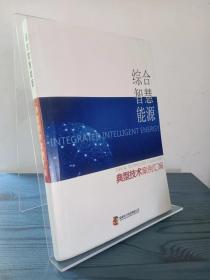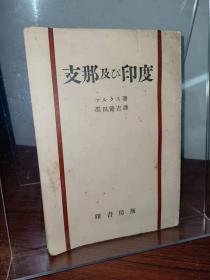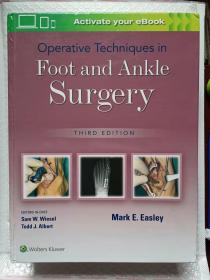
计算机组织与结构——性能设计(第九版)(英文版)
¥ 10 八五品
仅1件
上海奉贤
认证卖家担保交易快速发货售后保障
作者[美]William Stallings (威廉 斯托林斯
出版社电子工业出版社
出版时间2018-07
版次9
装帧其他
上书时间2024-05-19
- 店主推荐
- 最新上架
商品详情
- 品相描述:八五品
图书标准信息
- 作者 [美]William Stallings (威廉 斯托林斯
- 出版社 电子工业出版社
- 出版时间 2018-07
- 版次 9
- ISBN 9787121324390
- 定价 129.00元
- 装帧 其他
- 开本 16开
- 纸张 胶版纸
- 页数 784页
- 字数 1427千字
- 【内容简介】
- 作者以Intel x86系列通用处理器和ARM系列嵌入式处理器作为主要考察实例贯穿全书,将当代计算机系统性能设计问题和计算机组织与结构的基本概念及原理紧密联系起来。通过介绍计算机的发展与演变引入性能评价和性能设计的概念,然后以自顶而下的方式逐层展开介绍计算机系统、存储器体系结构、I/O及互连、计算机算术、指令集体系结构的设计及其实现技术,*后还介绍了处理器的各种并行组织技术。全书力求追踪新技术步伐,添加了高速点到点互连技术、PCIe互连结构、固态驱动器与闪存、当今主机技术等新技术的讨论。
- 【作者简介】
-
William Stallings在计算机安全、计算机网络和计算机系统结构的技术开发的广泛领域作出了独特的贡献。他撰写了多部著作,并在许多ACM和IEEE出版物上发表文章,包括IEEE和ACM的计算评论会议。 他先后11次获得年度最佳计算机科学教科书奖和学术作者协会奖。
William Stallings在计算机安全、计算机网络和计算机系统结构的技术开发的广泛领域作出了独特的贡献。他撰写了多部著作,并在许多ACM和IEEE出版物上发表文章,包括IEEE和ACM的计算评论会议。 他先后11次获得年度最佳计算机科学教科书奖和学术作者协会奖。 - 【目录】
-
Contents
Chapter 0 Reader’s and Instructor’s Guide
0.1 Outline of the Book
0.2 A Roadmap for Readers and Instructors
0.3 Why Study Computer Organization and Architecture?
0.4 Internet and Web Resources
Part One Overview
Chapter 1 Introduction
1.1 Organization and Architecture
1.2 Structure and Function
1.3 Key Terms and Review Questions
Chapter 2 Computer Evolution and Performance
2.1 A Brief History of Computers
2.2 Designing for Performance
2.3 Multicore, MICs, and GPGPUs
2.4 The Evolution of the Intel x86 Architecture
2.5 Embedded Systems and the Arm
2.6 Performance Assessment
2.7 Recommended Reading
2.8 Key Terms, Review Questions, and Problems
Part Two?The Computer System
Chapter 3 A Top-Level View of Computer Function and Interconnection
3.1 Computer Components
3.2 Computer Function
3.3 Interconnection Structures
3.4 Bus Interconnection
3.5 Point-to-Point Interconnect
3.6 PCI Express
3.7 Recommended Reading
3.8 Key Terms, Review Questions, and Problems
Chapter 4 Cache Memory
4.1 Computer Memory System Overview
4.2 Cache Memory Principles
4.3 Elements of Cache Design
4.4 Pentium 4 Cache Organization
4.5 Arm Cache Organization
4.6 Recommended Reading
4.7 Key Terms, Review Questions, and Problems
Appendix 4A Performance Characteristics of Two-Level Memories
Chapter 5 Internal Memory
5.1 Semiconductor Main Memory
5.2 Error Correction
5.3 Advanced Dram Organization
5.4 Recommended Reading
5.5 Key Terms, Review Questions, and Problems
Chapter 6 External Memory
6.1 Magnetic Disk
6.2 Raid
6.3 Solid State Drives
6.4 Optical Memory
6.5 Magnetic Tape
6.6 Recommended Reading
6.7 Key Terms, Review Questions, and Problems
Chapter 7 Input/Output
7.1 External Devices
7.2 I/O Modules
7.3 Programmed I/O
7.4 Interrupt-Driven I/O
7.5 Direct Memory Access
7.6 I/O Channels and Processors
7.7 The External Interface: Thunderbolt and Infiniband
7.8 IBM zEnterprise 196 I/O Structure
7.9 Recommended Reading
7.10 Key Terms, Review Questions, and Problems
Chapter 8 Operating System Support
8.1 Operating System Overview
8.2 Scheduling
8.3 Memory Management
8.4 Pentium Memory Management
8.5 ARM Memory Management
8.6 Recommended Reading
8.7 Key Terms, Review Questions, and Problems
Part three Arithmetic and Logic
Chapter 9 Number Systems
9.1 The Decimal System
9.2 Positional Number Systems
9.3 The Binary System
9.4 Converting Between Binary and Decimal
9.5 Hexadecimal Notation
9.6 Recommended Reading
9.7 Key Terms and Problems
Chapter 10 Computer Arithmetic
10.1 The Arithmetic and Logic Unit
10.2 Integer Representation
10.3 Integer Arithmetic
10.4 Floating-Point Representation
10.5 Floating-Point Arithmetic
10.6 Recommended Reading
10.7 Key Terms, Review Questions, and Problems
Chapter 11 Digital Logic
11.1 Boolean Algebra
11.2 Gates
11.3 Combinational Circuits
11.4 Sequential Circuits
11.5 Programmable Logic Devices
11.6 Recommended Reading
11.7 Key Terms and Problems
Part Four The Central Processing Unit
Chapter 12 Instruction Sets: Characteristics and Functions
12.1 Machine Instruction Characteristics
12.2 Types of Operands
12.3 Intel x86 and Arm Data Types
12.4 Types of Operations
12.5 Intel x86 and ARM Operation Types
12.6 Recommended Reading
12.7 Key Terms, Review Questions, and Problems
Appendix 12A Little-, Big-, and Bi-Endian
Chapter 13 Instruction Sets: Addressing Modes and Formats
13.1 Addressing Modes
13.2 x86 and ARM Addressing Modes
13.3 Instruction Formats
13.4 x86 and ARM Instruction Formats
13.5 Assembly Language
13.6 Recommended Reading
13.7 Key Terms, Review Questions, and Problems
Chapter 14 Processor Structure and Function
14.1 Processor Organization
14.2 Register Organization
14.3 Instruction Cycle
14.4 Instruction Pipelining
14.5 The x86 Processor Family
14.6 The Arm Processor
14.7 Recommended Reading
14.8 Key Terms, Review Questions, and Problems
Chapter 15 Reduced Instruction Set Computers
15.1 Instruction Execution Characteristics
15.2 The Use of a Large Register File
15.3 Compiler-Based Register Optimization
15.4 Reduced Instruction Set Architecture
15.5 RISC Pipelining
15.6 MIPS R4000
15.7 Sparc
15.8 RISC Versus CISC Controversy
15.9 Recommended Reading
15.10 Key Terms, Review Questions, and Problems
Chapter 16 Instruction-Level Parallelism and Superscalar Processors
16.1 Overview
16.2 Design Issues
16.3 Pentium 4
16.4 Arm Cortex-A8
16.5 Recommended Reading
16.6 Key Terms, Review Questions, and Problems
Part Five Parallel Organization
Chapter 17 Parallel Processing
17.1 Multiple Processor Organizations
17.2 Symmetric Multiprocessors
17.3 Cache Coherence and the MESI Protocol
17.4 Multithreading and Chip Multiprocessors
17.5 Clusters
17.6 Nonuniform Memory Access
17.7 Vector Computation
17.8 Recommended Reading
17.9 Key Terms, Review Questions, and Problems
Chapter 18 Multicore Computers
18.1 Hardware Performance Issues
18.2 Software Performance Issues
18.3 Multicore Organization
18.4 Intel x86 Multicore Organization
18.5 ARM11 MPCore
18.6 Ibm zEnterprise 196 Mainframe
18.7 Recommended Reading
18.8 Key Terms, Review Questions, and Problems
Appendix A Projects for Teaching Computer Organization and Architecture
Appendix B Assembly Language and Related Topics
Glossary
References
Index
Online Chapters1
Part Six The Control Unit 19-1
Chapter 19 Control Unit Operation 19-1
19.1 Micro-operations 19-3
19.2 Control of the Processor 19-13
19.3 Hardwired Implementation 19-30
19.4 Recommended Reading 19-35
19.5 Key Terms, Review Questions, and Problems 19-35
Chapter 20 Microprogrammed Control 20-1
20.1 Basic Concepts 20-3
20.2 Microinstruction Sequencing 20-16
20.3 Microinstruction Execution 20-26
20.4 TI 8800 20-45
20.5 Recommended Reading 20-59
20.6 Key Terms, Review Questions, and Problems 20-60
点击展开
点击收起
— 没有更多了 —




















以下为对购买帮助不大的评价